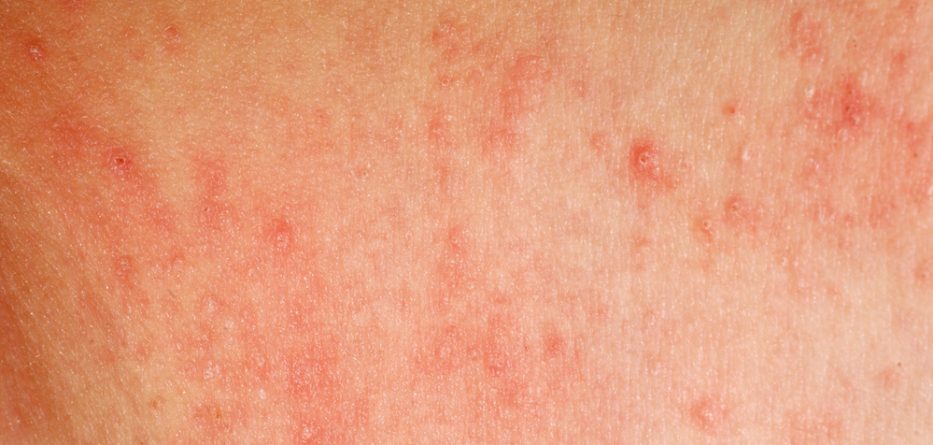Simply put, dermatitis refers to the inflammation of the skin, but it covers a wide array of conditions. In many individuals, the initial stages of dermatitis are defined by red, itchy, and dry skin. In more severe cases of dermatitis, people experience hard flakes, painful fissures, or oozing sores. Considering a multitude of things can aggravate the skin, your doctor will attempt to pinpoint the exact type of dermatitis you are suffering from. However, the treatment options available for most kinds of conditions that cause inflammation or irritation on the skin are almost identical.
Dermatitis Types:
Contact Dermatitis
Contact dermatitis has two common types: allergic contact dermatitis and irritant contact dermatitis. Contact dermatitis is characterized by a pink or red rash that is itchy. Identifying the specific cause of contact dermatitis is very tricky.
Allergic contact dermatitis is essentially an allergic reaction to a substance that gets in contact with the skin even if only momentarily, e.g., poison ivy. Contact for just a very short period of time is enough to cause dermatitis. In addition to poison ivy, a host of other plants may trigger allergic contact dermatitis like herbs, flowers, vegetables, and fruits. Some other known allergic contact dermatitis causes are cosmetics like fragrance and skincare products, hair dyes, chemical preservatives like formaldehyde, rubber, and metals.
Irritant contact dermatitis, on the other hand, is the result of repeated skin contact with harsh substances. A typical instance of this type of dermatitis is the skin on the hands getting too dry and cracked on account of over-washing them. In such a case, water, which is not even a harsh chemical, is what irritates the skin due to repeated frequent exposure.
Atopic Dermatitis
Also known as eczema, atopic dermatitis causes scaly, itchy skin that can also become inflamed and irritated. This dermatitis type is typically genetic and is linked to asthma, other allergies, and too much stress. A skin barrier irregularity that lets out moisture and instead hosts germs can also be a part of the puzzle.
Seborrheic Dermatitis
This type of dermatitis causes yellowish and oily flaking typically on the scalp, face, and genitals. When it affects the face, it is usually in or around the brows or by each side of the nose. Stress may exacerbate seborrheic dermatitis. Another name for seborrheic dermatitis on the scalp is dandruff.
Nummular Dermatitis
This dermatitis type is characterized by red patches in the shape of coins that most commonly form on the arms, hands, torso, and legs. Men are more prone to nummular dermatitis than women, and they typically begin to experience symptoms between the ages 55 and 65. A dry environment and taking hot showers too often may cause this type of dermatitis.
Stasis Dermatitis
Stasis dermatitis is a result of reduced circulation in the lower limbs and can develop in individuals with congestive heart failure, varicose veins, or other ailments that cause long-term swelling in the legs. Arteries in the lower legs cannot circulate blood adequately, leading the blood to pool, which then causes inflammation. The inflammation usually results in skin irritation, particularly in the ankles.
Featured Image: Depositphotos/© panxunbin




